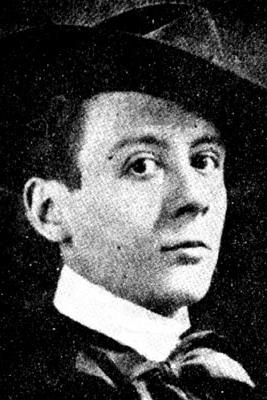4.1.1.3 The poetic work of René López (1881 – 1909)

René López was once a promising figure in Cuban literature; but affected by the death of his mother in 1902, his stay in a New York sanatorium, and drinking and drug use undermined his potential, and he ultimately died of a morphine overdose.
His life and the lyrical line he followed have many similarities with that of Julián del Casal, without assuming an explicit cult in his work as was the case with other writers, the predilection for dark environments and the attraction to death are common to them, René López even went further in evasion through the consumption of narcotics.
Like many island poets, he established a peculiar relationship with the sea, as evidenced by his most famous and anthologized poem, “Boats Passing By,” from which some verses are transcribed:
“Oh ships that pass in the deep night
through the blue epidermis of the seas,
with your red lights that throb
to the lightest kiss of the air,
(…)
When you arrive at the port where they are waiting for you
wrapped in the morning mists,
For how many of you will have showers of flowers!
for how many storms of sorrows!
You are the pages of the book of my life,
written with sighs and blood;
the pen of Pain drew its letters,
Despair recorded his phrases.
And as I watch you pass by like illusions,
among bright flowers and songs,
I think of the ship that sheltered within it
the lifeless body of my poor mother!
Oh ships that pass in the deep night
“by the blue epidermis of the seas!”
These verses constitute the culmination of the poem, which begins with the personification of ships, the sense of movement and the uncertainty of fate, in contrast to what is revealed at the end as the painful certainty of the poet’s mother’s death, hence the lingering melancholy; if one speculates a little, his own life unfolds in a vicious circle, the antithesis of the strength of ships and the challenge of the seas they relentlessly undertake.
The death of his mother may awaken hints of the Oedipus complex, which prompts a return to childhood and the evocation of the shadows of Thanatos, perhaps to ward off loneliness; but his poems are not overly explicit, instead suggesting his personal abysses through rather subliminal inferences.
The poet enjoyed the friendship of Regino E. Boti and other contemporaries, such as Max and Pedro Henríquez Ureña. He participated in the editorial staff of the magazine “Cuba Libre” and also contributed to “El Fígaro,” “Azul y Rojo” (where he won an award for his poem “Alma y Materia”); “Letras” (Letters), and “Cuba y América” (Cuba and America). His verses were included in the anthology “Arpas Cubanas” (Cuban Harps). He was preparing a collection of poems with the almost revealing title “Moribundas” (Dying) when his death came.
Jesús David Curbelo stated about the poet: “The curious René López (1882-1909) was as superficial and fleeting as his ships in the sea of our poetry. Elegant, decadent, and occasionally illuminated (in the poem “Canción pueril”), but not a seeker of silence, but rather someone who, by accident, died too early.”








